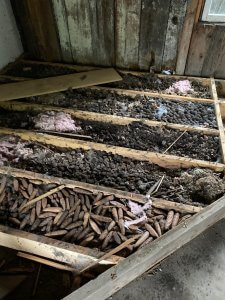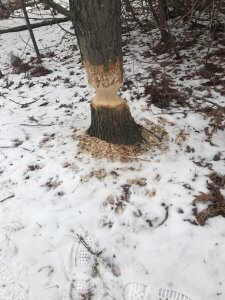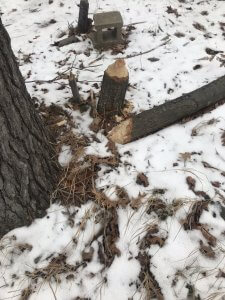Learn how to keep the neighborhood rabbit out of your garden this spring with these tips.
Why We Keep Rabbits Out
Anyone who tills soil regards the rabbit as more than a cute addition to the carrot patch. This long-eared mammal possesses a voracious appetite for various fresh vegetation— perennials, annuals, woody plants, vegetables, and fruit. The menu of rabbit favorites is so ridiculously long it’s easier to list the foods they don’t enjoy.
As if that isn’t enough, rabbits also reproduce at excessively high rates, hence the phrase “multiplying like rabbits”. This is why allowing them to hang around may quickly become a total garden infestation and destruction. Their numbers skyrocket at three litters of six babies each per year in the north and up to as many as six litters of three babies each year in the south. In the north, the first litter appears in March but is year-round elsewhere. Their gestation period is a mere 29 days.
Your backyard bunny’s main concern is to eat without being eaten, which is a difficult task given that more than two dozen predatory species relish rabbits. Because of this, nibbling your marigolds is not a carefree picnic but, in fact, a potentially life-threatening mission. However, if the neighborhood Peter Cottontail can squeeze through a hole in your garden fence, it will be able to munch safely.
How to Prevent Rabbits
The most effective way to keep rabbits out of the garden is to start using the plants they don’t like early in the spring and then be consistent throughout the growing season.
- First and foremost, it’s best to keep rabbits from crossing into the garden, to begin with. Many historical remedies rely on spreading various substances around the garden’s perimeter, i.e., human hair, dried blood, or dried blood meal. If you sprinkle dried blood on the soil around all your plants as early in the season as you can, and repeat after heavy rain. Note: If you have dogs, it’s probably best to avoid this method because they will likely be attracted to the scent and potentially dig up your garden.
- Don’t solely rely on repellents. The most effective way of keeping out rabbits is chicken wire fencing. Install a fence that is 4 feet high and bury it 6 inches deep. Bend the fence’s top foot away from the garden similarly to a security fence so that they are unable to climb or jump over it. For fresh bulbs, try securing a cage or dome of chicken wire over the beds.
- Rabbits prefer to not leave their shelters, so if you reduce the possible rabbit homes around your yard this will help deter them. Brushing away piles of brush and leaves, and filling in abandoned burrows are also means of prevention. Hopefully, if a rabbit doesn’t have a place to live, it won’t stay long. Rabbits will also breed much more efficiently if they have a suitable habitat available—all the more reason to provide nothing!
What Do Rabbits Dislike?
According to rabbit experts, rabbits have plant preferences based on taste, nutritional value, the presence of poison or prickles, and ease of availability. Their food tastes can also vary by season and even region, so not all plants work for all rabbit species. Do your research, and then tend plants that your local rabbits don’t find very tasty.
Rabbits tend to avoid a few of the same plants as Japanese beetles and deer.
If you’d like to control all these critters, choose plants such as:
- Lilac bushes
- Daffodils
- Lavender
- Marigolds
- Forsythia
- Snapdragons
- Zinnias
These will likely help to reduce your rabbit population. Obviously, these are not is not a guaranteed solution, as hungry rabbits will eat almost anything. However, filling your garden with these plants might make your garden less appetizing than another one.
If all else fails, calling a wildlife professional at Hogarth’s Pest Control is always a great option. We are skilled in trapping and relocating sometimes required for rabbit control. If you are experiencing an unrelenting issue with rabbits in your garden this spring, don’t hesitate to reach out today!
 report that nut-hoarding squirrel species can be quite particular about their nut caches, putting them away in neat little groupings. This strategy helps them remember where all of their hiding places are. The findings point to just how mentally taxing caching nuts is; however, the organizational abilities of squirrels only go so far.
report that nut-hoarding squirrel species can be quite particular about their nut caches, putting them away in neat little groupings. This strategy helps them remember where all of their hiding places are. The findings point to just how mentally taxing caching nuts is; however, the organizational abilities of squirrels only go so far.




